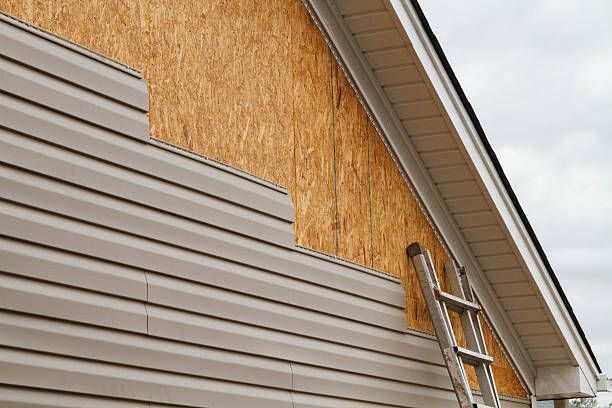If you’re wondering what are signs my siding needs to be replaced, you’re not alone. Your home’s siding plays a major role in protecting against moisture, pests, and extreme weather. Yet many homeowners don’t notice a problem until visible damage occurs. Knowing the warning signs can save you thousands in future repairs and help you maintain your home’s appearance, efficiency, and value.
Cracked, Warped, or Loose Panels
One of the most obvious signs your siding needs to be replaced is visible damage such as cracking or warping. If you see panels that are bent outward, split, or pulling away from the walls, that siding is no longer doing its job. Even small gaps can let in water, which may lead to mold, mildew, and wood rot behind the walls.
Wind damage can also loosen panels over time. If you frequently find yourself reattaching or nailing down siding after storms, it’s time to consider a replacement.
Fading Color and Chalking
Severe fading may seem like a cosmetic issue, but it often indicates that the siding has reached the end of its useful life. When UV rays break down the protective coating, the material begins to lose color and performance. You may also notice a white, powdery residue—called chalking—when you run your hand over the surface. This is another sign the top protective layer is breaking down.
These are common signs your siding needs to be replaced, especially if the material is over 25 years old or exposed to direct sunlight year-round.
Blistering, Bubbling, or Swelling
Siding that has trapped moisture behind it may start to bubble or blister. These bumps occur when water becomes trapped underneath the surface. This can be the result of poor ventilation, improper installation, or old age.
Swelling at the seams or ends of boards is another warning sign. This is common with composite or fiber cement siding, which may absorb water and begin to expand over time. Swollen edges can allow water to penetrate further into the wall, leading to damage that can’t be fixed with simple patchwork.
Mold, Mildew, or Water Stains
Any dark streaks, green patches, or fuzzy growths are worth paying attention to. These usually show up near the base of the siding or around seams and joints. Mold and mildew thrive in damp environments, so if you’re seeing signs of biological growth on the outside, there’s a chance water is getting inside too.
This is one of the most serious signs your siding needs to be replaced, especially if it’s been ignored for several months or more.
Rising Energy Bills and Drafts
Siding does more than protect your home from the elements—it also helps regulate temperature. If you’ve noticed a spike in your heating or cooling bills and your HVAC system is working harder than usual, your siding may be letting air in and out of your home.
Drafts near walls or cold spots during winter can also indicate that your siding is no longer insulating your home effectively. This issue is especially common in homes with aging or poorly installed siding.
Interior Clues: Paint, Drywall, and Odors
Sometimes, the signs siding needs to be replaced are hiding inside your home. Peeling interior paint, wallpaper bubbles, soft drywall, or a musty odor are all signs that water has made its way indoors.
If your walls feel damp, warped, or discolored—especially near exterior-facing sides—it’s time to investigate whether your siding is to blame.
Siding Age and Product Lifespan
Even if your siding looks okay from a distance, its age can be a key factor. Most vinyl siding lasts around 20 to 25 years, while fiber cement and engineered wood can last longer. However, these estimates depend heavily on climate, installation quality, and maintenance.
If your siding is approaching the end of its projected lifespan and you’re noticing other red flags, it may be more cost-effective to replace it now before it fails completely.
Why You Should Act Quickly
Ignoring signs your siding needs to be replaced can lead to bigger and more expensive problems. Damaged siding allows moisture to infiltrate insulation, framing, and even electrical systems. You could be setting yourself up for costly repairs including structural damage, mold remediation, or pest control.
By acting at the first signs of trouble, you protect your investment, improve your home’s energy efficiency, and avoid future headaches.
The Benefits of Replacing Your Siding
Siding replacement does more than solve problems—it also enhances curb appeal and increases your property’s value. Today’s products come in a variety of colors, textures, and finishes to match any home style. Many options also feature insulation to reduce energy use and noise.
New siding gives your home a fresh appearance and helps you feel more confident in its protection and performance.
Get Professional Help from Hearthstone
If you’re noticing any of these signs your siding needs to be replaced, Hearthstone Home Improvement is here to help. We provide honest assessments and clear solutions. Our team of siding experts will walk you through your options, answer your questions, and handle your project with care from start to finish.

